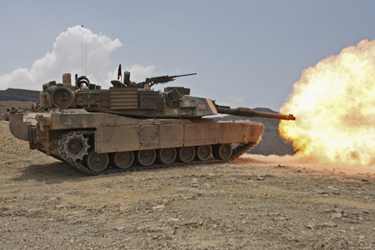Connecting Target Audience, Messaging, And Outcomes: Lessons Learned From A Military Deployment!

By Perry Rearick, Chief Editor, Follow Your Buyer

In the mid-1990s I found myself in Kuwait, a common deployment destination at that time. It was neither my first nor last time there, but it was the only time serving as an Army public affairs officer and it wasn’t something I had much experience at.
As a bit of background, the United States had a covenant with the Kingdom of Kuwait to defend its sovereignty should Iraq invade like it did in 1990. About 5,000 soldiers were deployed there with many more on alert if needed.
There was a large contingent of international journalists covering the crisis and I became part of an ad hoc team responsible for media relations. In the initial days of the deployment, we escorted groups of reporters, usually to capture images and stories we wanted covered, emphasizing the master messages we wanted the public to hear.
The main message was that we were there on a mission to maintain peace, we were not an invading Army. As I watched reporters deliver breaking news in front of a backdrop of soldiers loading 120mm rounds onto Abrams tanks, it hit me that our images weren’t aligned with our message.
The images were true, but maybe our messaging was wrong. We weren’t credible, arguably insincere, and it bothered me.
I reset my thinking on what little I knew about public affairs: the fundamentals of target audience, the outcomes we sought, and what messaging was needed.
Target audience-our target audience included the Iraqi political and military leadership who were assembling their forces on the border with Kuwait. I knew the Iraqis tuned in to television news in the United States each day, it was their primary source of intelligence on us.
Outcomes-our outcome was to maintain peace and the best way to do that would be to convince the Iraqis that the risks for them were too high if they chose to invade.
Messaging-here is where we were getting it wrong. What would convince the Iraqis that the risks were too great and deter them from invading?
The next morning, I was tasked to escort Mike Boettcher and his NBC news team. He needed to do a segment that would air later that day on Good Morning America, and he asked me where they could do the shoot. I recommended the last line of a dozen armored vehicles still in one of the holding areas awaiting a planeload of soldiers to arrive.
As we silently walked across a large asphalt space, I felt compelled to make some small talk. I described how soldiers arrived, performed maintenance checks on the armored vehicles, loaded them with ammunition and other supplies, and they would be in defensive positions along the Kuwait-Iraq border within a few hours. The rest of the armored vehicles that had filled the open space around us were already there and we had enough combat power in Kuwait to destroy the Iraqi army five times.
Once the camera was in place, Mike began delivering his breaking news segment, and he repeated what I had told him, nearly word for word. This wasn’t something I planned. Recall that I was just trying to fill some silence. Later that day his breaking news was broadcast to national and international audiences, including the Iraqis.
If you know Middle East history, the Iraqis did not reinvade Kuwait in the 1990s. I’m not suggesting it was due to a single news story, but it offers a great lesson in messaging.
So, what is your message development process? What, and how well, does that process deliver? Are your messages the same as the outcomes you seek? “We’re great, buy our services!” Or “We have a booth at the tradeshow, visit us!” Or “We developed a new product, watch a demo!
Missing from these messages, meant to represent a common style, is what’s in it for the target audience.
Your messaging is the vehicle that transports your target audience to a set of outcomes for them and you.
Think target audience and outcomes, then work on the messaging.
I hope you have a great week!
